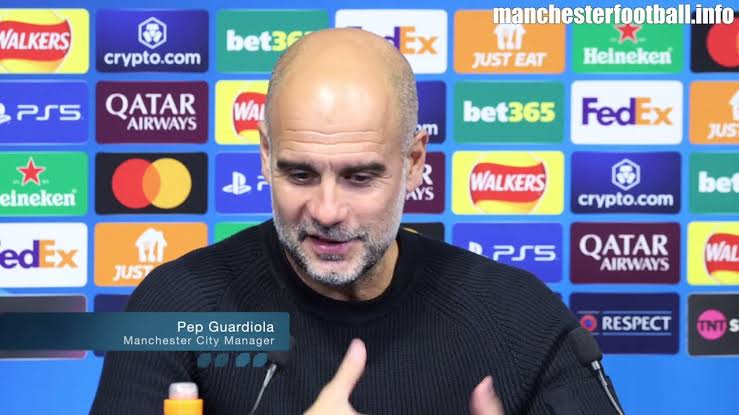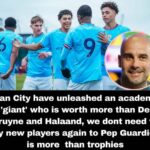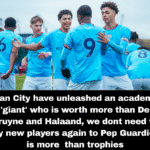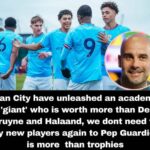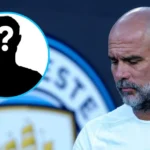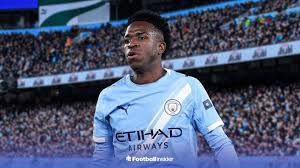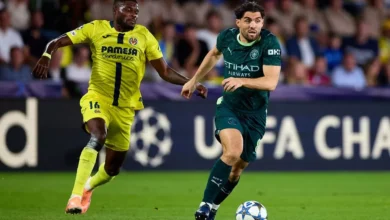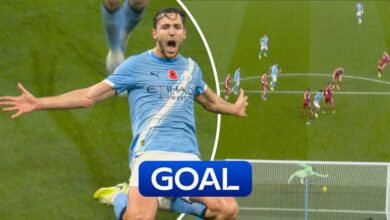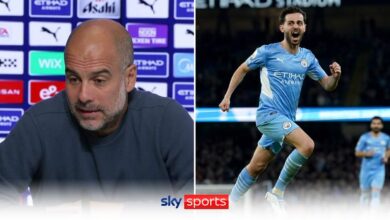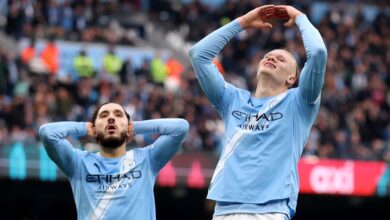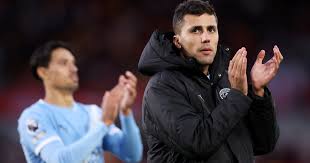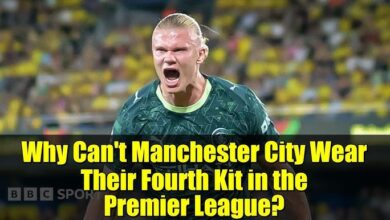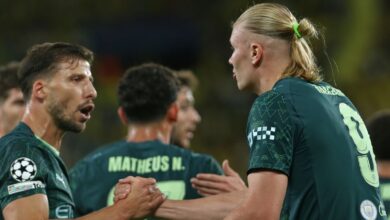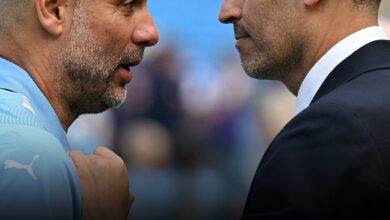Manchester City Face Extended Absence for Key Players: Comprehensive Injury Analysis
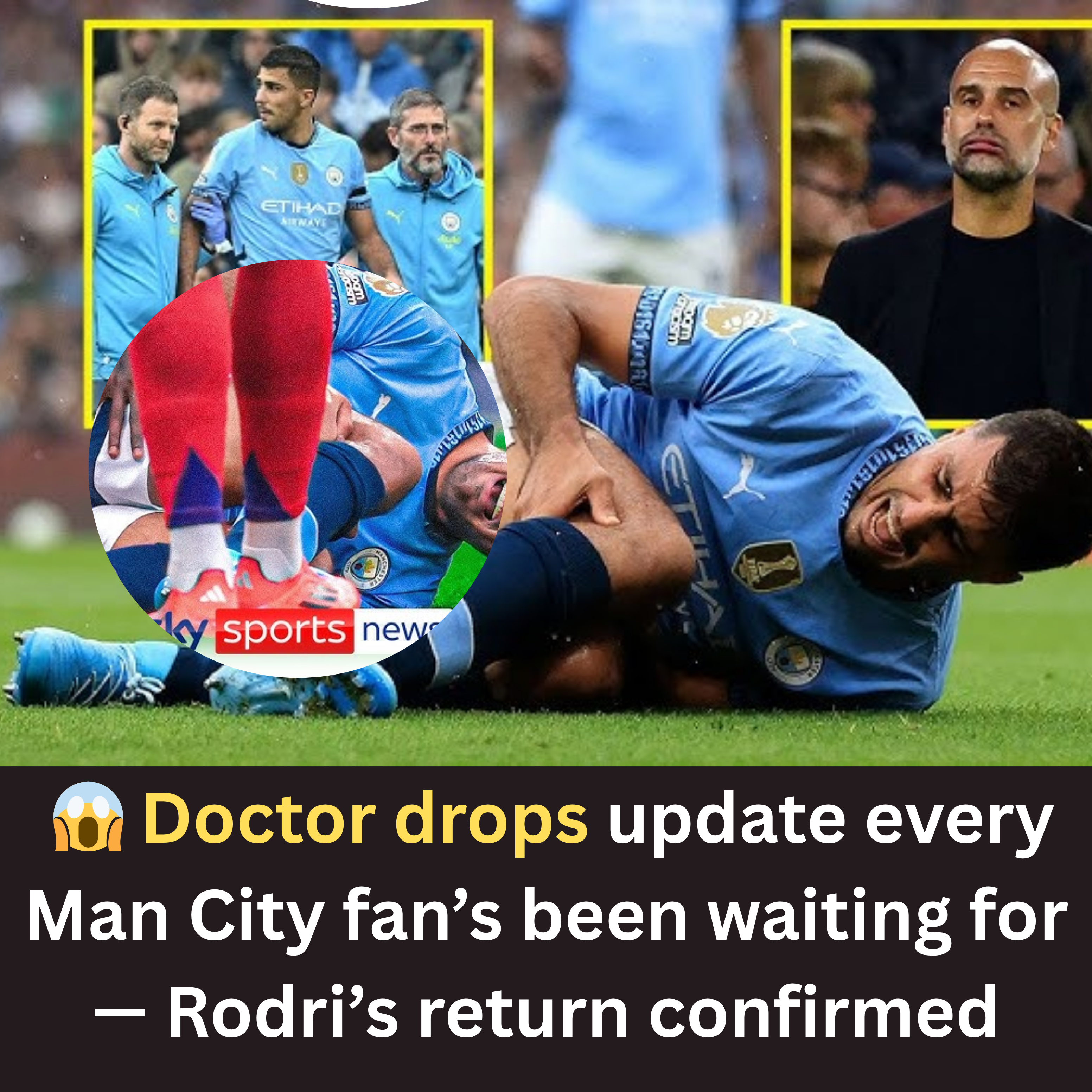
Manchester City find themselves navigating yet another challenging period as injury concerns continue to plague Pep Guardiola’s squad. Following their Premier League victory over Everton, the club’s manager delivered sobering news regarding two key members of his team, highlighting the delicate balance between competitive ambition and player welfare that has become increasingly central to modern football management.
The latest update centers on two contrasting figures in City’s squad: Rodri, the established Spanish international whose importance to the team’s structure cannot be overstated, and Nico O’Reilly, the promising 20-year-old who has emerged as an unexpected solution during this season’s injury crisis. Both players face uncertain timelines, leaving Guardiola to once again demonstrate his tactical flexibility and squad management acumen.
Rodri’s Extended Absence: A Cautious Approach to Recovery
The Initial Injury and Misdiagnosis
The saga of Rodri’s current injury began during the opening exchanges of Manchester City’s encounter with Brentford earlier in October. What initially appeared to be a minor complaint has evolved into a more concerning issue, forcing the club’s medical team to adopt an increasingly conservative approach to the midfielder’s rehabilitation.
When Rodri first felt discomfort in his hamstring during those early minutes against Brentford, neither the player nor the medical staff believed they were dealing with a significant problem. The Spanish international, known for his remarkable durability and consistency, has rarely found himself sidelined during his time at the Etihad Stadium. His initial assessment suggested that the issue was minor, perhaps requiring only a brief period of rest before returning to full training.
However, as the days progressed, it became apparent that the injury required more careful management than first anticipated. The decision was made for Rodri to withdraw from international duty with Spain, allowing him to focus entirely on his recovery at Manchester City’s training facilities. This choice reflected both the player’s commitment to his club and the medical team’s recognition that rushing his return could prove counterproductive.
The Domino Effect of Caution
Guardiola’s post-match comments following the Everton game revealed the extent of the club’s caution regarding Rodri’s condition. The midfielder had harbored hopes of featuring against Everton, targeting that fixture as his return date after missing international duty. Those hopes, however, proved optimistic. Not only did Rodri fail to make the matchday squad, but he had not even participated in team training sessions in the lead-up to the game.
The manager’s subsequent revelation that Rodri would also miss the upcoming fixtures against Villarreal in the Champions League and Aston Villa in the Premier League extends his absence to at least another week. The earliest potential return date now appears to be the League Cup fixture against Swansea City, scheduled for late October. This represents a significant extension of what was initially perceived as a brief layoff.
Guardiola’s explanation for this extended caution reflects lessons learned from previous experiences. “It’s not long, but it’s muscular and you have to be careful,” the City boss explained, his words carrying the weight of past disappointments. “We’ve tried so many times, we’ve tried to not take a risk, but we have not been able to do that. So we will see.”
The Broader Context of Muscular Injuries
This measured approach to muscular injuries represents a shift in thinking across elite football. Hamstring problems, in particular, have proven notoriously difficult to manage, with premature returns often leading to more severe complications and extended absences. The modern understanding of such injuries emphasizes the importance of complete healing before resuming competitive action, even when initial symptoms appear to subside.
For Manchester City, the stakes are particularly high. Rodri has established himself as arguably the most crucial component of Guardiola’s tactical system. His ability to control tempo, break up opposition attacks, and initiate City’s build-up play makes him virtually irreplaceable. The team’s performance metrics consistently demonstrate a marked decline in effectiveness when the Spanish international is absent from the lineup.
The psychological impact of his absence extends beyond pure tactical considerations. Rodri’s presence provides stability and confidence to those around him, his calm demeanor and intelligent positioning allowing more attacking players to express themselves without fear of being exposed defensively. His absence forces structural adjustments that can disrupt the team’s natural rhythm and flow.
Nico O’Reilly’s Emergence and New Injury Concern
The Unlikely Hero’s Rise
While Rodri’s injury represents a setback for an established star, the situation surrounding Nico O’Reilly tells a different story—one of unexpected opportunity and impressive adaptation. The 20-year-old left-back has emerged as one of the surprising narratives of Manchester City’s season, thrust into prominence by circumstances beyond his control yet responding with maturity beyond his years.
O’Reilly’s eighth consecutive start against Everton represented a remarkable run for a player who began the campaign as a fringe member of the squad. His consistent selection speaks volumes about both his performances and the injury situation that has created these opportunities. Rather than appearing overwhelmed by the responsibility, the young defender has embraced the challenge, growing in confidence with each appearance.
Against Everton, O’Reilly once again demonstrated the qualities that have earned him Guardiola’s trust. His perfectly weighted assist for Erling Haaland’s opening goal showcased his technical quality and composure under pressure. The cross exhibited the kind of decision-making and execution that typically takes years to develop, delivered with the casual confidence of a seasoned professional.
The Latest Setback
The concern now is that O’Reilly’s impressive run may be interrupted by injury of his own. In the closing stages of the Everton match, the young left-back appeared in visible discomfort after challenging for a header. The sight of him grimacing and signaling to the bench prompted immediate concern, leading to his substitution in the final minutes.
Post-match observations painted an uncertain picture. O’Reilly was seen leaving the Etihad Stadium with a bandage wrapped around his knee, a sight that naturally prompted worries about the severity of the problem. For a player who relies on pace, agility, and quick changes of direction, any knee issue carries potential complications.
Guardiola, however, offered a somewhat reassuring assessment in his post-match press conference. “I think it was a knock. We’ll see. Hopefully it will not be dangerous,” the manager stated, his tone suggesting optimism that the issue might be minor. The characterization of the injury as a “knock” implies impact-related trauma rather than a structural problem, which would typically carry a more favorable prognosis.
The Broader Implications for Squad Depth
O’Reilly’s potential absence, even if brief, highlights the precarious nature of Manchester City’s current squad situation. The young defender has become an important part of Guardiola’s plans not through design but through necessity. His emergence has masked what might otherwise be a critical shortage in certain positions, demonstrating both the quality of City’s academy system and the thin margins by which elite teams operate.
The timing of this potential injury is particularly unfortunate given the upcoming schedule. City face a crucial Champions League fixture against Villarreal, followed by a challenging Premier League encounter with Aston Villa. These matches represent different types of tests, requiring defensive solidity and tactical discipline. O’Reilly’s absence would force Guardiola to reshuffle his defensive configuration at a critical juncture in the season.
The Champions League Context: Redemption and Pressure
Last Season’s Disappointment
The upcoming Champions League fixture against Villarreal carries added significance beyond the three points on offer. Manchester City experienced the ignominy of exiting last season’s competition at the play-off stage, a shocking early elimination that represented one of the lowest points of Guardiola’s tenure. The memory of that failure continues to resonate within the club, adding extra pressure to this season’s campaign.
For a club of Manchester City’s ambitions and resources, failure to progress from the group stage—or its new equivalent phase—is simply unacceptable. The Champions League represents the ultimate validation for the club’s project, the trophy that has remained frustratingly elusive despite numerous near-misses and one triumphant victory in 2023.
Current Standing and Path Forward
After three games of the new Champions League format, City find themselves on four points, a respectable if unspectacular return. Three points against Villarreal would move them to seven, putting them in a stronger position to secure qualification to the knockout rounds. The new format, with its increased number of games and different qualification structure, has created both opportunities and challenges for clubs to navigate.
Guardiola acknowledged the importance of home fixtures in building a platform for qualification. “Guardiola is focusing on the home games but knows that a couple of away victories will also be needed to give the Blues room to spare,” reflects the manager’s pragmatic assessment of what will be required. The trip to Spain therefore represents both a challenge and an opportunity—a chance to build momentum and create breathing room in the standings.
The fixture against Borussia Dortmund at the Etihad, scheduled for two weeks after the Villarreal match, will mark the halfway point of the first phase. That game carries its own significance, representing a clash between two clubs with rich Champions League histories and current ambitions. The preparation for that encounter begins with how City navigate the challenges presented by Villarreal and Aston Villa while managing their injury concerns.
Tactical Implications and Guardiola’s Chess Game
Adapting Without Rodri
The absence of Rodri forces Guardiola into tactical recalibrations that extend throughout the team structure. The Spanish midfielder’s role as the single pivot in City’s system is so specialized that finding a like-for-like replacement proves virtually impossible. His unique combination of physical presence, technical skill, tactical intelligence, and positioning sense creates a profile that no other player in the squad perfectly matches.
Various solutions have been attempted during previous Rodri absences, each with varying degrees of success. Some approaches involve shifting existing midfielders into deeper roles, asking players like Mateo Kovacic or John Stones to assume responsibilities outside their natural comfort zones. Other strategies involve more fundamental system changes, perhaps moving to a double pivot or adjusting the defensive line to compensate for reduced protection.
Each solution carries trade-offs. More defensive configurations may provide stability but sacrifice the attacking fluidity that has become synonymous with Guardiola’s City. More adventurous approaches might maintain offensive threat but leave the team vulnerable to counter-attacks and transitions, precisely the situations that Rodri’s presence typically neutralizes.
The O’Reilly Factor in System Design
O’Reilly’s emergence has influenced Guardiola’s tactical thinking in subtle but important ways. The young left-back’s technical comfort and willingness to advance into attacking positions has allowed City to maintain their characteristic width and positional rotations. His ability to contribute in the final third, as demonstrated by his assist for Haaland, adds an extra dimension to City’s attacking structure.
If O’Reilly is unavailable, Guardiola must reconsider these offensive patterns. Alternative options at left-back may necessitate adjustments in how City build attacks down that flank, potentially requiring wider players to drop deeper or central midfielders to provide different types of support. These subtle shifts can have cascading effects throughout the team’s positional structure and movement patterns.
The Physical Demands of Modern Football
Fixture Congestion and Player Welfare
The injury concerns facing Manchester City reflect broader issues within modern football regarding fixture congestion and player welfare. The expansion of competitions, the intensification of pressing styles, and the reduced recovery time between matches have created an environment where injuries have become increasingly common and problematic.
Guardiola has been among the most vocal critics of the football calendar, repeatedly expressing concerns about the demands placed on players. His caution with Rodri’s recovery reflects an awareness that rushing players back into action often leads to more serious problems down the line. The manager’s experience has taught him that short-term thinking about availability can create long-term absences.
The challenge, however, is that competitive pressures make such patience difficult to maintain. Every game carries significance, whether for league position, European qualification, or cup progression. The temptation to accelerate player returns is constant, creating a tension between immediate needs and long-term welfare.
The Science of Recovery
Modern sports science has transformed how clubs approach injury management and recovery. Manchester City’s medical department employs cutting-edge technology and methodologies to monitor player condition, assess injury severity, and optimize rehabilitation protocols. The decision-making around Rodri’s return will be informed by data points including muscle imaging, loading metrics, biomechanical analysis, and functional testing.
Yet despite these advances, uncertainty remains. Muscular injuries retain an element of unpredictability, with individual responses to rehabilitation varying based on numerous factors including age, injury history, biomechanics, and even psychological state. The “we will see” conclusion to Guardiola’s comments about Rodri reflects this inherent uncertainty—an acknowledgment that even with the best resources and expertise, guarantees cannot be provided.
Looking Ahead: Navigating the Coming Weeks
Immediate Challenges
The coming week presents Manchester City with contrasting challenges that will test squad depth and tactical flexibility. The midweek trip to Villarreal in the Champions League demands focus and discipline, potentially in hostile conditions against opponents fighting for their own European ambitions. The weekend fixture against Aston Villa represents a different type of examination, facing a Premier League rival capable of exploiting any defensive vulnerabilities.
Guardiola must manage not only the team selection for these games but also the psychological aspects of injury concerns. Players stepping in for absent teammates carry additional pressure, knowing that mistakes may be amplified by the context of depleted options. The manager’s ability to maintain confidence and clarity becomes crucial in such circumstances.
The League Cup Opportunity
The potential return of Rodri for the League Cup fixture against Swansea offers both hope and strategic considerations. While the midfielder’s availability would obviously strengthen the team, the question becomes whether the risk of featuring him in that competition is justified. The League Cup, while a trophy City would like to win, sits lower on the priority list than Premier League and Champions League ambitions.
This creates a delicate calculation: does City use the Swansea game as a return vehicle for Rodri, allowing him to rebuild match fitness in a theoretically lower-pressure environment? Or do they extend his rest further, prioritizing complete healing over accelerating his comeback? The decision will likely depend on both his physical condition and the team’s results in the preceding fixtures.
Conclusion: Resilience and Adaptation
Manchester City’s current injury situation encapsulates the challenges facing elite football clubs in the modern era. The absence of crucial players like Rodri tests both tactical systems and squad depth, while unexpected injuries to emerging talents like O’Reilly add layers of complexity to team selection and planning.
Guardiola’s measured approach to these challenges reflects hard-earned wisdom about the dangers of short-term thinking. His willingness to prioritize player welfare over immediate availability, even when facing important fixtures, demonstrates a long-term perspective that may frustrate in the moment but ultimately serves the club’s broader ambitions.
The coming weeks will reveal whether this cautious strategy proves successful. City’s ability to maintain competitive momentum despite personnel challenges will depend on the contributions of squad players, the tactical flexibility of the manager, and perhaps an element of fortune regarding further injuries.
For supporters watching these developments unfold, the situation offers a reminder of football’s inherent unpredictability. Plans must constantly adapt, opportunities emerge unexpectedly, and success often depends not just on the quality of first-choice players but on the depth and resilience of the entire squad. As Manchester City navigate this challenging period, they do so with the knowledge that how they respond to adversity may ultimately define their season.
